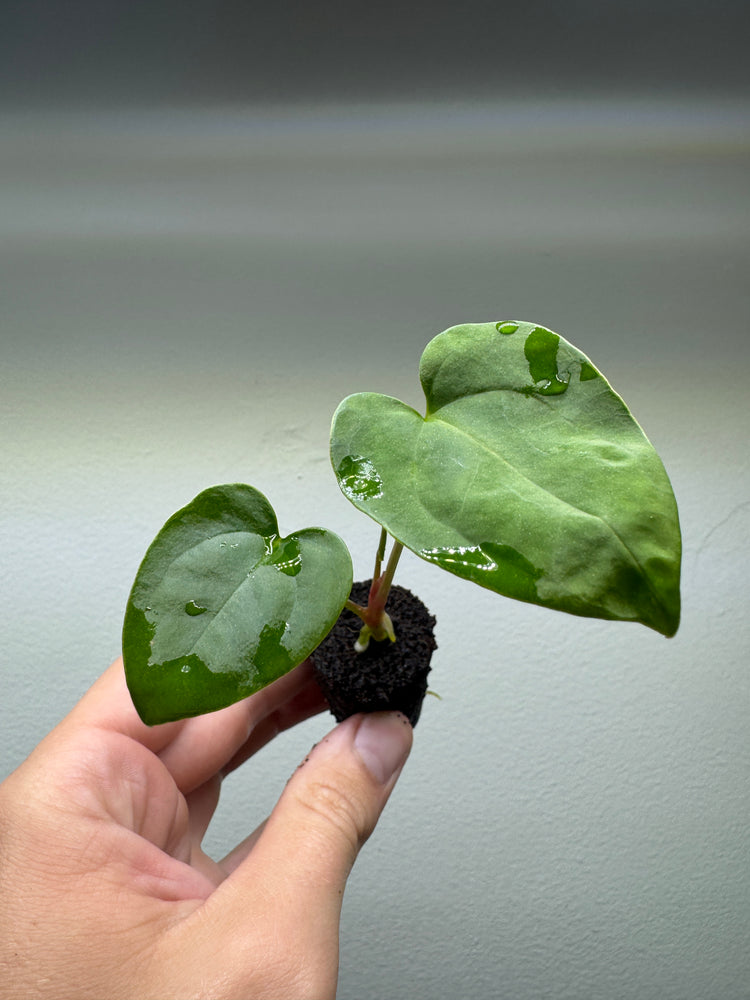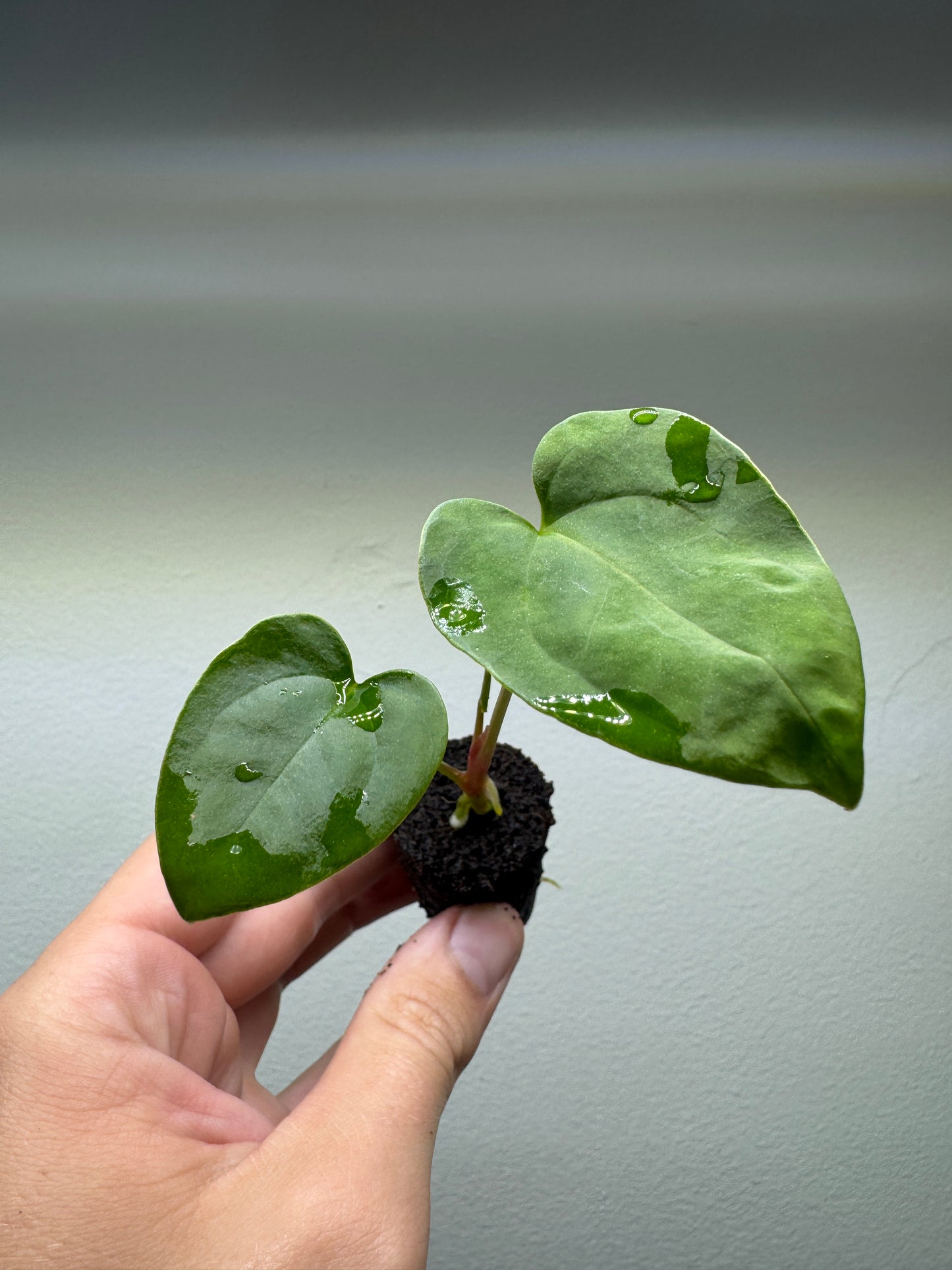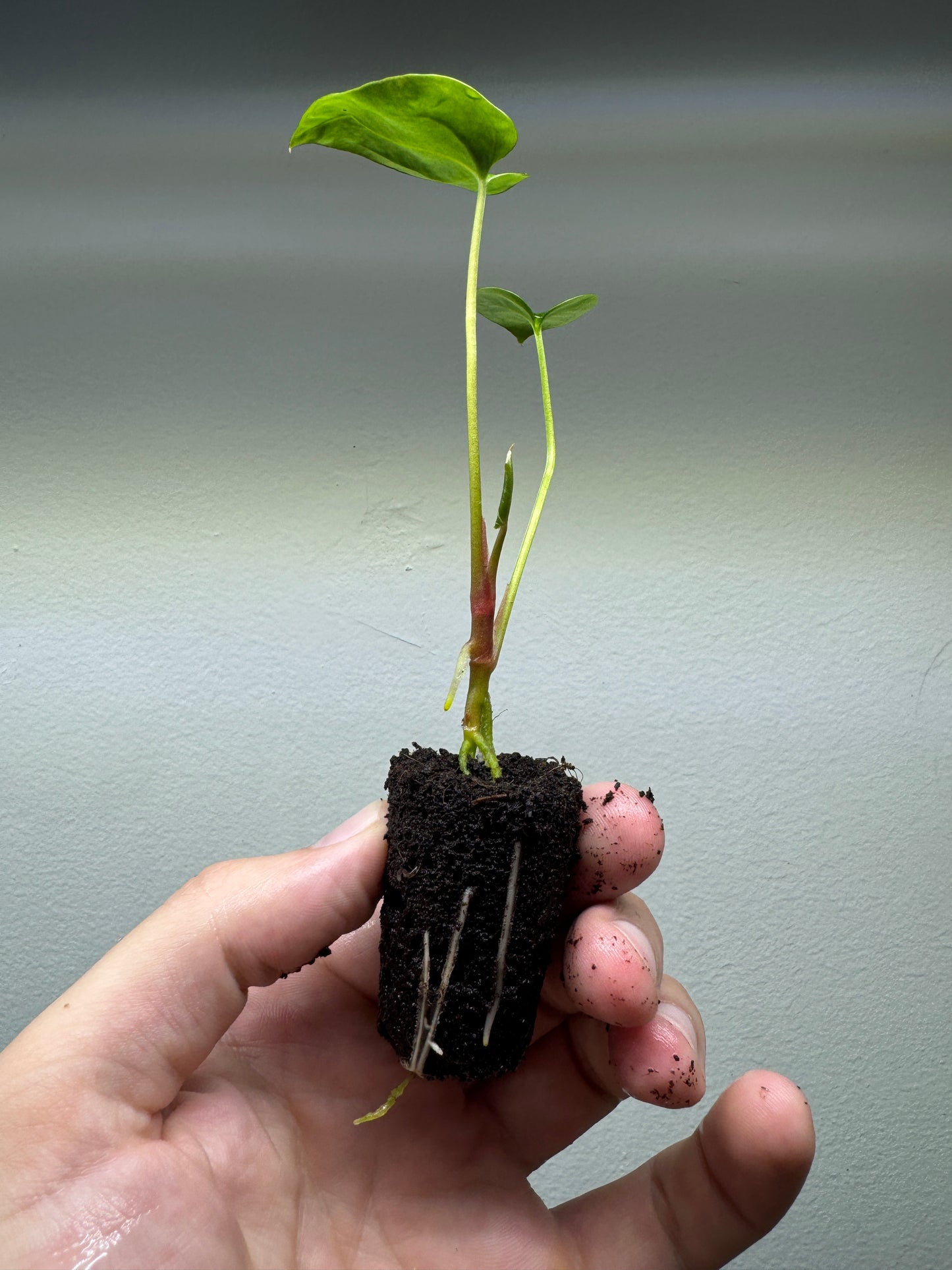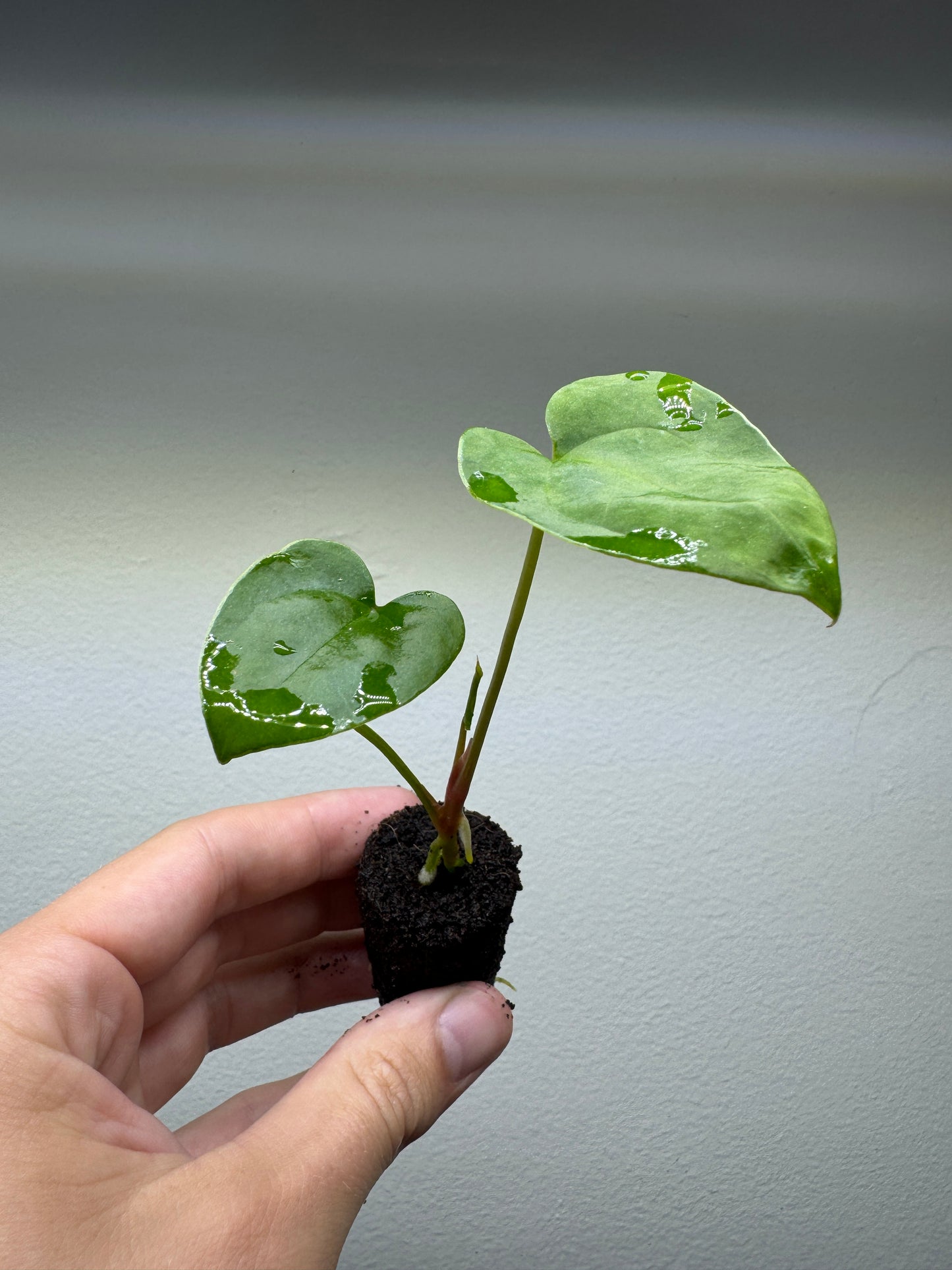- Home
- >
- Anthuriums
- >
- Anthurium papillilaminum x ((crystallinum x magnificum) x papillilaminum ’IL’)

Plantthatplant
Anthurium papillilaminum x ((crystallinum x magnificum) x papillilaminum ’IL’)
Anthurium papillilaminum x ((crystallinum x magnificum) x papillilaminum ’IL’)
Couldn't load pickup availability
Share
Heritage and Origin
This Anthurium hybrid, Anthurium papillilaminum x ((crystallinum x ,magnificum) x papillilaminum ‘IL’), is an exquisite creation developed through careful crossbreeding. This hybrid combines the most desirable traits of its parent species, resulting in a plant that is not only visually stunning but also unique in its characteristics.
-
Anthurium papillilaminum: Known for its velvety, dark green leaves with a striking heart shape, Anthurium papillilaminum is a species prized for its elegant, textured foliage. It originates from the tropical regions of Central and South America and is valued for its deep, rich coloration and pronounced veining.
-
Anthurium crystallinum: This species is renowned for its large, round leaves with striking silvery-white veining against a deep green background. Anthurium crystallinum is highly sought after by collectors for its luminous, almost metallic leaf texture.
-
Anthurium magnificum: A close relative of crystallinum, Anthurium magnificum is characterized by its broad, leathery leaves with prominent veins and a robust, structured appearance. The hybridization with magnificum adds a greater leaf size and more pronounced veining, enhancing the visual impact of the plant.
-
Anthurium papillilaminum 'IL': The 'IL' - Incurved Lobes of Anthurium papillilaminum brings in refined traits such as more significant lobes.
Aesthetic Characteristics
This hybrid features a blend of the best traits from its parent plants:
-
Leaf Shape and Texture: The leaves are a fusion of the heart shape from papillilaminum and the broad, velvety texture from crystallinum and magnificum. The hybrid’s leaves are likely to be thick and leathery, with a deep green hue and a luxurious velvety finish.
-
Veining and Color: The prominent, silvery-white veining from crystallinum and magnificum adds a striking contrast to the dark green leaves. The 'IL' variant may contribute to a deeper, more intense leaf color, with a possible hint of reddish or purplish tones in the younger leaves.
-
Growth Habit: This hybrid is expected to have a compact yet robust growth habit, making it a striking centerpiece in any plant collection. The blend of genetics suggests it will have a moderate growth rate, with each new leaf adding to the plant’s overall grandeur.
Care Requirements in an Indoor Setting
As a hybrid of tropical Anthuriums, this plant will thrive under conditions that mimic its natural habitat.
-
Light Requirements:
- Optimal Light: Provide bright, indirect light to keep the leaves vibrant and healthy. Direct sunlight should be avoided to prevent leaf burn, but ample light is needed to maintain the plant’s striking variegation and growth.
-
Temperature and Humidity:
- Temperature: The plant prefers a warm environment, ideally between 18-25°C (65-77°F). It should be kept away from drafts and sudden temperature changes.
- Humidity: High humidity (60-80%) is essential for this hybrid, as it hails from tropical environments. In indoor settings, especially in cooler climates, a humidifier or a humidity tray will help maintain the necessary moisture levels. Regular misting is also recommended to mimic the plant’s natural conditions.
-
Watering:
- Watering Schedule: Water when the top inch of soil feels dry. It’s important to maintain consistent moisture without waterlogging the soil, which can lead to root rot. During winter, reduce the frequency of watering to prevent overwatering.
-
Soil and Potting:
- Soil Mix: Use a well-draining, aerated soil mix, ideally a blend of orchid bark, perlite, and peat moss or coco coir. This mix allows for good air circulation around the roots, mimicking the plant’s natural epiphytic environment.
- Repotting: Repot every 1-2 years to refresh the soil and accommodate growth. Choose a pot that provides adequate space for the roots to spread, but not too large, as the plant prefers to be somewhat root-bound.
-
Fertilization:
- Feeding: During the growing season, feed the plant every 4-6 weeks with a balanced, water-soluble fertilizer. Dilute the fertilizer to half strength to avoid over-fertilizing, which can damage the roots. Reduce feeding during the dormant winter months.
-
Pest Control:
- Common Pests: Watch for common pests such as spider mites, aphids, and mealybugs, especially in dry indoor conditions. Regular inspection and maintaining high humidity can help prevent infestations.
- Prevention and Treatment: If pests are detected, treat with insecticidal soap or neem oil, and ensure that the plant has adequate airflow to reduce the risk of fungal issues.






